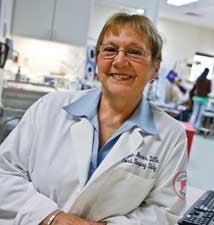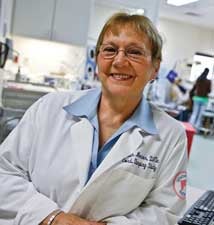 KINGSTON, R.I. – June 19, 2014 – Judith Mercer, clinical professor emerita of nursing at the University of Rhode Island, was awarded the Hattie Hemschemeyer Award last month at the American College of Nurse-Midwives annual conference in Denver, Colo.
KINGSTON, R.I. – June 19, 2014 – Judith Mercer, clinical professor emerita of nursing at the University of Rhode Island, was awarded the Hattie Hemschemeyer Award last month at the American College of Nurse-Midwives annual conference in Denver, Colo.
The Hattie Hemschemeyer Award honors an exceptional certified nurse midwife who is a member of the American College of Nurse-Midwives (ACNM) and has provided continuous contributions or distinguished service to midwifery. Mercer has provided midwifery care throughout the Northeast and conducted research examining gentle birth practices.
Mercer, a resident of Cranston, is an internationally recognized scholar and nurse-midwife, particularly for her research on the effects of umbilical cord clamping in premature infants.
“When I was told the great news that I had received this award, I cried for about five minutes. I am very, very honored because it is the highest award that the ACNM gives. The past recipients are a group of extremely talented women,” said Mercer.
Initially, educating new midwives was her primary commitment. She taught at Georgetown University for 15 years and later joined URI’s faculty in 1998 where there was excellent support for a beginning researcher. She continued to practice and teach until 2007, when she pursued research full time.
“It was my clinical experience as a midwife that led to my interest in cord clamping. I attended a birth where the baby had the cord wrapped around its neck. He was very pale and not moving when he was born. I resuscitated him with the cord intact, and to be honest, I think it might have saved his life,” said Mercer. “After, I figured, I had just seen a miracle. Now, I better research it.”
She completed her doctorate at the Catholic University of America while teaching at Georgetown. After coming to URI, she received a training award in 2003 from the National Institutes of Health to conduct a pilot study on delayed umbilical cord clamping in pre-term infants for 30 to 45 seconds. The National Institute for Nursing Research, a division of the National Institutes of Health, provided a $392,000 grant for the project involving pre-term 72 mother-infant pairs. Results showed that a brief delay in the clamping of the umbilical cord of premature babies prevented bleeding in the brain and infections. For this to become a part of clinical practice more research had to be done and so Mercer’s determination grew.
In 2008, a $2 million, 5-year grant funded by the National Institute for Nursing Research helped Mercer launch a research project at Women & Infants Hospital in Providence. This study was a randomized controlled trial of 212 infants assigned to early or late cord clamping groups. Data was collected on the infants throughout the hospital’s neonatal intensive care unit stay; and neurobehavioral/motor assessment was completed when they were at 7 and 18 months corrected age. Corrected age is the difference between a current baby’s age in weeks and the number of weeks they were premature.
Today, Mercer is in the process of finishing up the pre-term study by looking at the babies in the 2008 project to see if there’s a difference in any of their outcomes and behaviors. This will mark the end of her pre-term infant studies.
In 2012, Mercer received another 5-year, $2.4 million grant for a study on the effects of delayed cord clamping in full-term babies. This study is underway at Women & Infants Hospital and Brown University’s Advanced Baby Imaging Laboratory.
“I loved practicing and teaching midwifery and am very happy to have this exciting research to focus on. It is very satisfying to get to work on real world research, give presentations, publish papers and share my knowledge about something I have found the truest passion for,” said Mercer.
This release was written by Sabrina Galiney, a URI Marketing and Communications intern and public relations major.
Judith Mercer photo by Joe Giblin

